
Issue 067
November 2010
It’s said among fighters that the cage can be your best friend or your worst enemy. Understanding how to control your opponent against the cage and using the fence to your advantage has to form a large part of any professional fighter’s training. Recognizing how the presence of the fence enhances or inhibits certain techniques can mean the difference between victory and defeat. This issue we’ll look at a few techniques for the fighter on top to ensure that the cage is their friend, and not their opponent’s.
Using the cage to pass the closed guard

1 Pete (black shirt) is on top and in Tommy’s closed guard. Tommy has superior hand position.
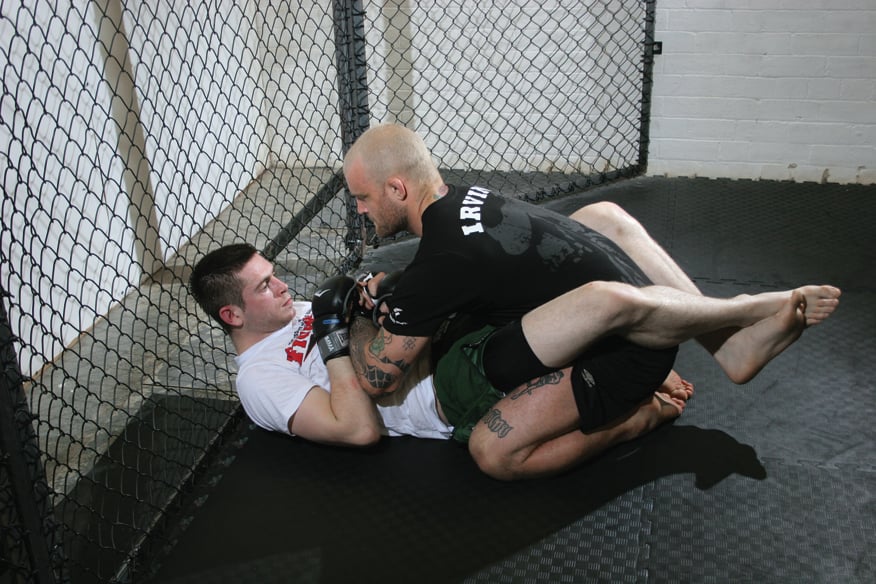
2 Pete reaches over with his left hand and takes control of the opposite wrist.
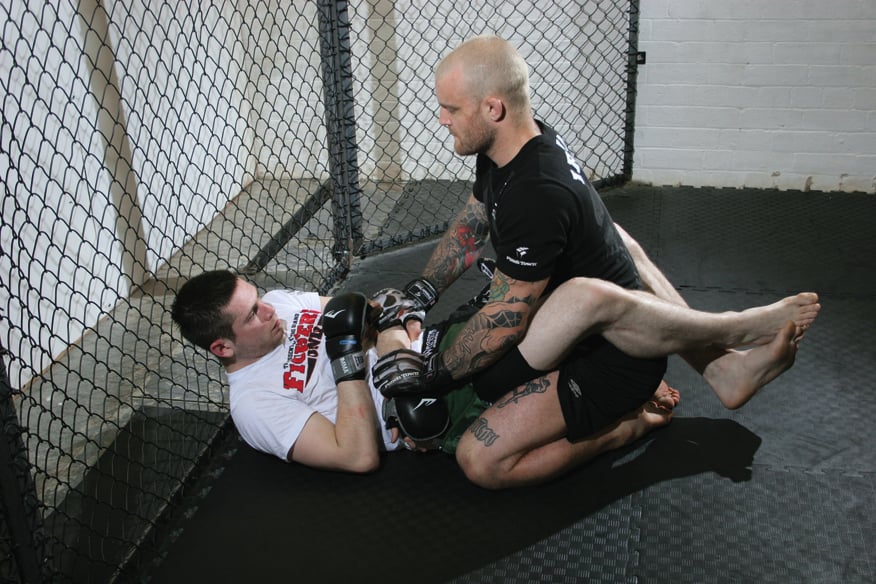
3 Pete drags the wrist across and frees his far hand by rotating his wrist out and pinning the arm. Now Pete has superior hand position. He postures up
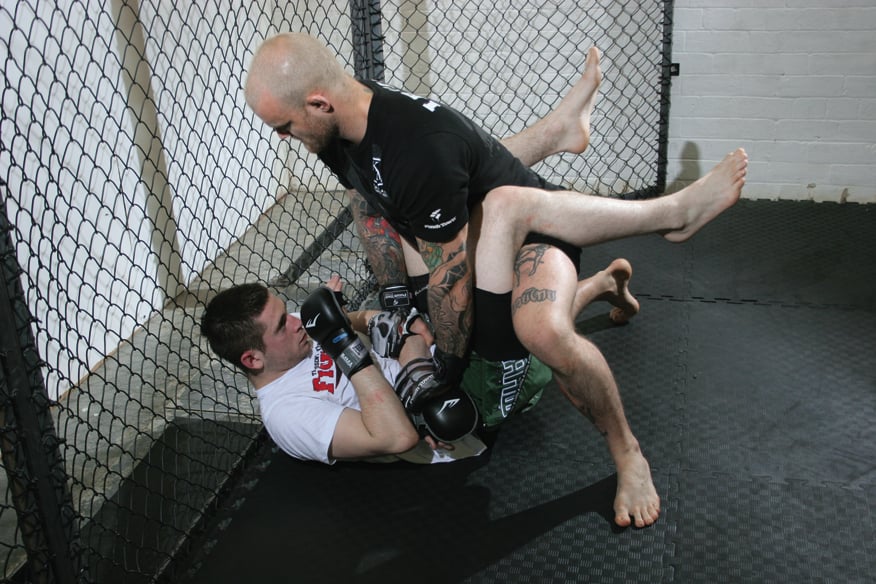
4 Pete stands and stacks Tommy.
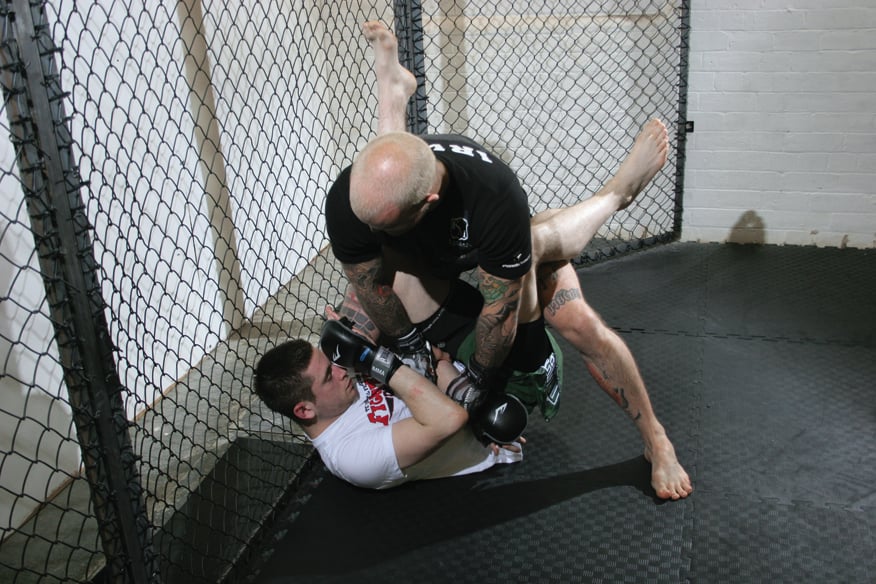
5 Pete puts his knee on Tommy’s chest, eliminating any ability to move the hips for an attack.

6 Pete releases control of Tommy’s arm and postures up, pushing his hips in to clear Tommy’s legs.
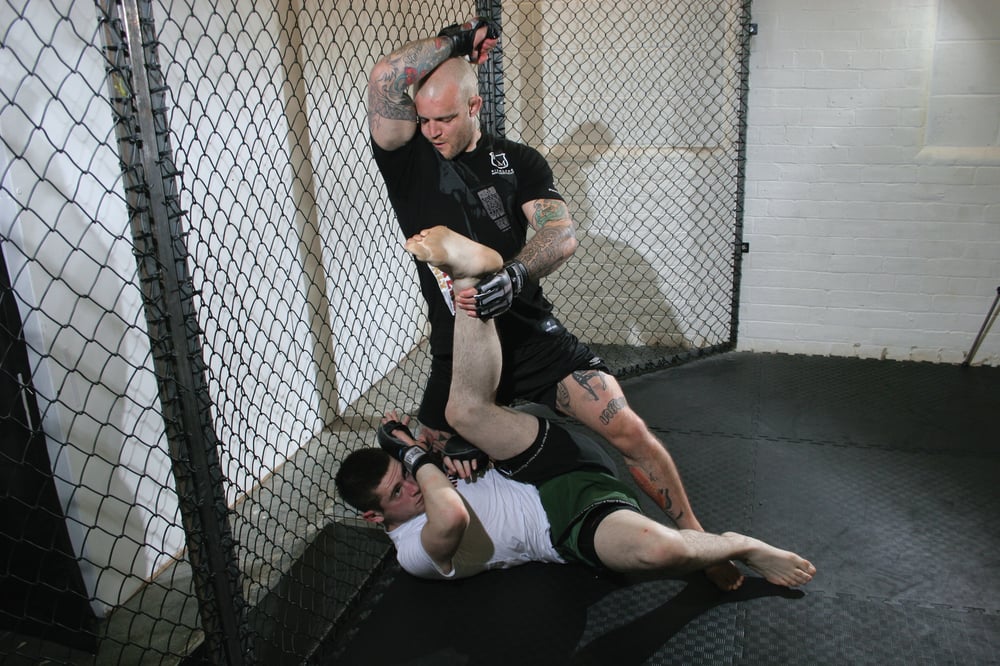
7 Pete keeps his hips pressed in and controls the ankle, ready to strike.

8 Pete smashes a hammerfist down into Tommy’s face while simultaneously pinning Tommy’s upper body and controlling the legs.
Passing the butterfly guard against the fence
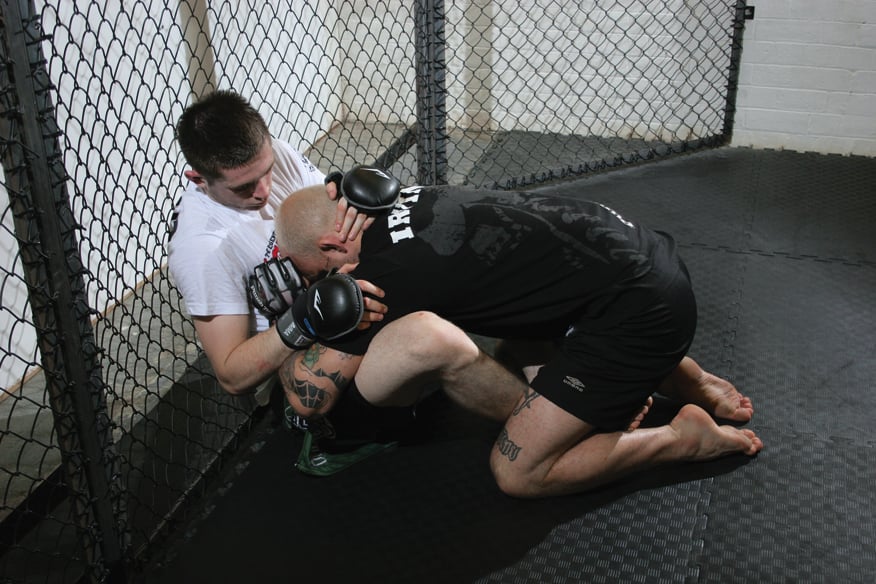
1 Pete has taken Tommy down against the fence and is in his butterfly guard. Tommy is sitting up and looking to escape using the fence.
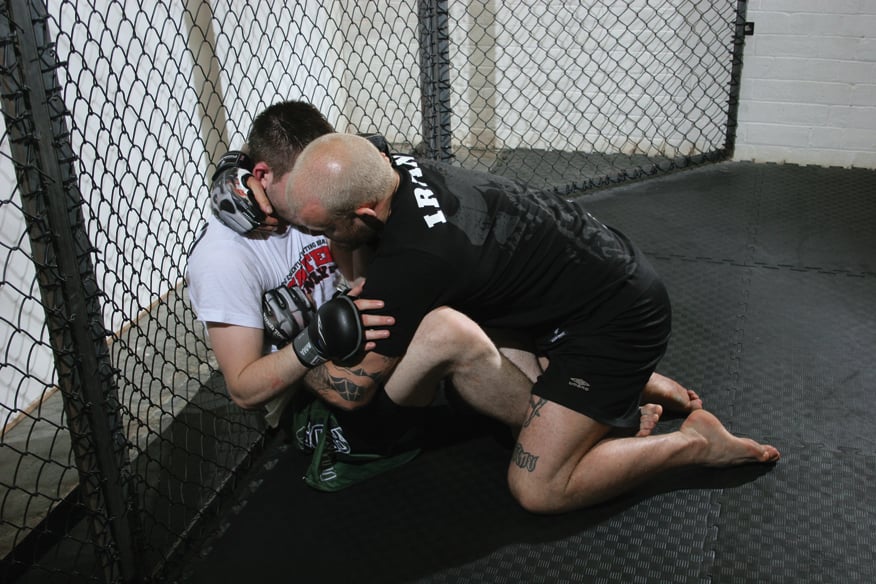
2 Pete postures up and grabs a collar tie
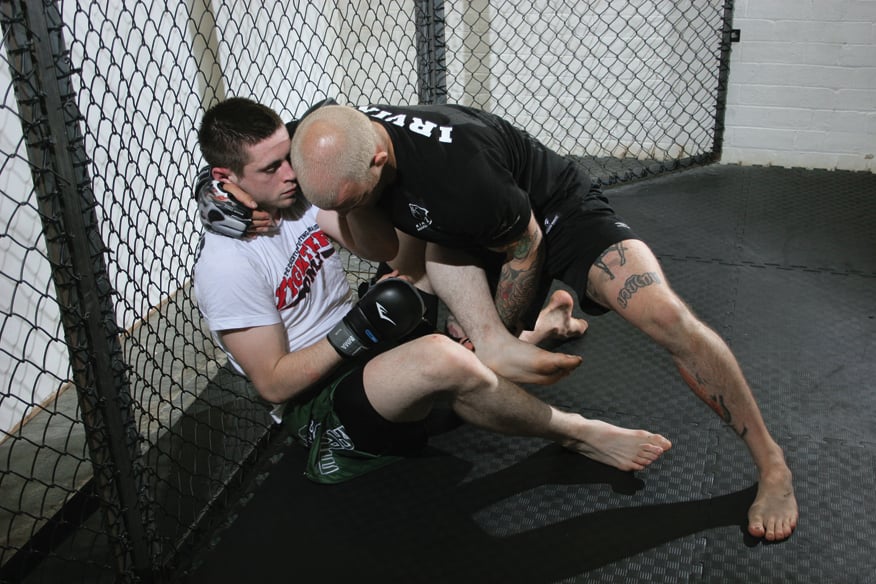
3 Pete steps his near leg up (circling around Tommy’s legs) and underhooks the right ankle

4 Pete lifts the leg high and pulls down on Tommy’s neck to twist him to the mat.
Defending the armbar against the fence
UFC lightweight Sean Sherk often scores his takedowns against the fence and finds himself in this position. Take a look at some of his classic battles with Hermes Franca and Tyson Griffin to see how he deals with it. Observe the importance of head position when escaping and when holding the man down against the fence.
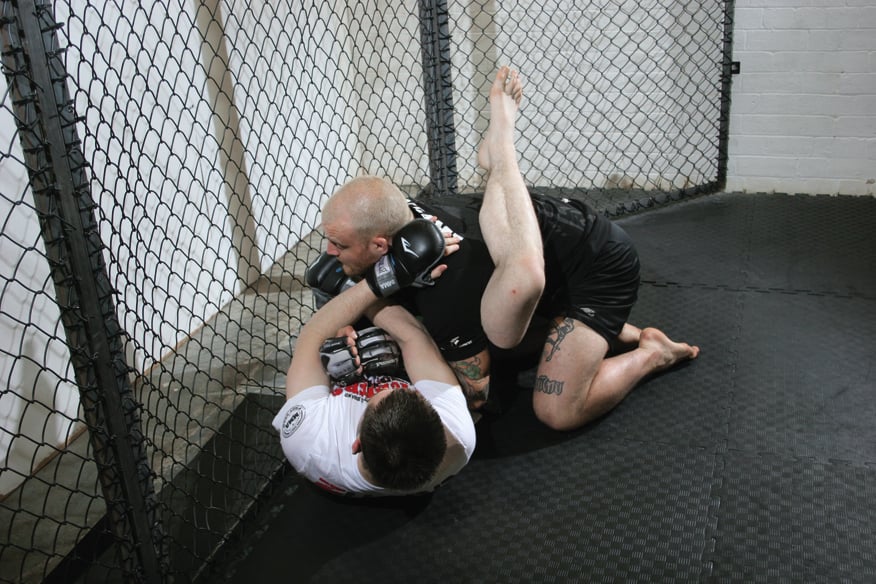
1 Tommy has started moving his hips out for an armbar.

2 Tommy uses the cage to help him get his leg up high around Pete’s shoulder. Normally Pete would circle around to line up with Tommy’s hips again, but he can’t defend in the conventional manner because the cage is in the way.

3 Pete circles to his left (which would usually put him deeper into the armbar) but he’s using the cage to his advantage by putting his knee on Tommy’s floating rib, using the cage to counterbalance. The weight of the knee ride stops Tommy from taking his hips out further.

4 Pete drives his hips up and pulls his arms out, putting his weight into Tommy’s upper body with his knee.
Ground 'n' pound from half guard
Take a look at Jon Fitch's 2006 and 2010 bouts against Thiago Alves. Fitch pounded away at Alves against the fence, using the half-guard position effectively to control and dominate the ‘Pitbull’.

1 Pete is in Tommy’s guard next to the fence. Pete is controlling Tommy with an overhook and has his head on the far side. This gives him superior head position (his head above Tommy’s).
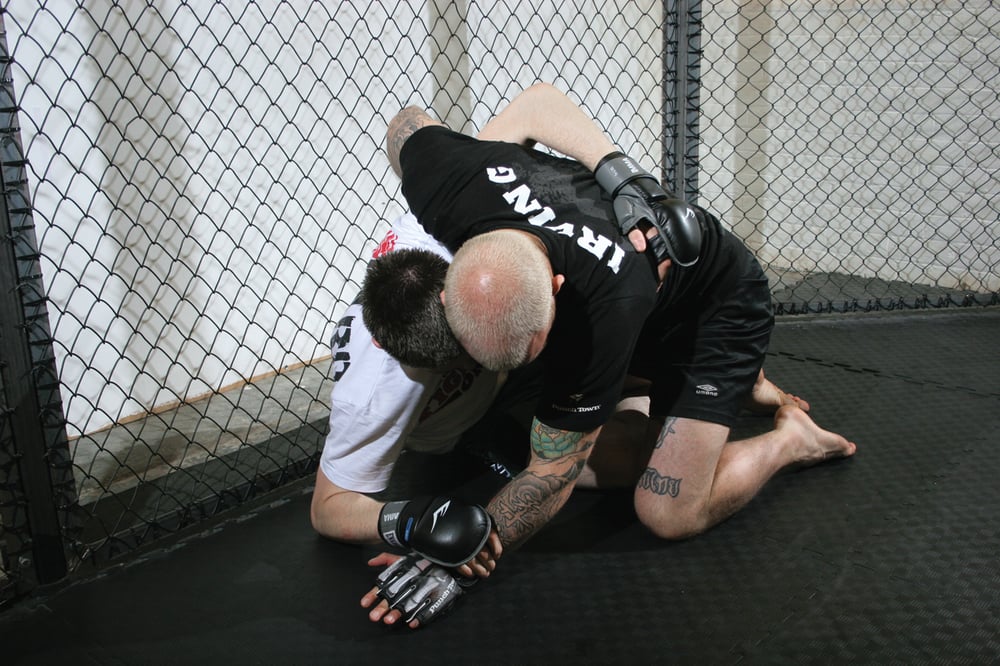
2 Tommy uses the underhook to sit up, hipping out to the fence. This puts Pete’s head on the other side of Tommy’s – now he’s in danger of losing superior position, and this’ll facilitate Tommy’s escape.
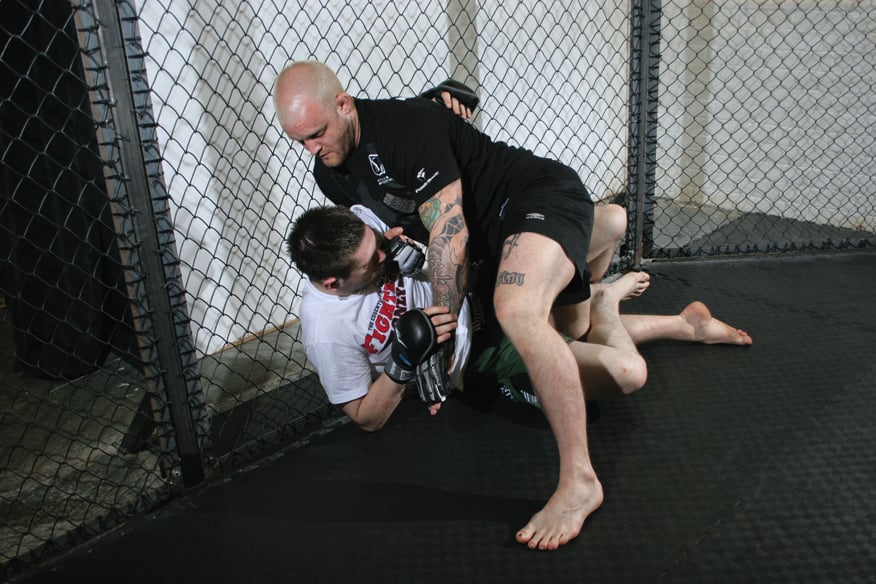
3 Pete has to put his head above Tommy’s and close off his escape route. If Pete stepped his leg up in the middle of the cage he’d be swept easily, but it’s impossible for Tommy to sweep Pete over the top because of the fence. Pete drives Tommy into the fence, putting his left leg out for base.

4 Pete pushes down on Tommy’s head...
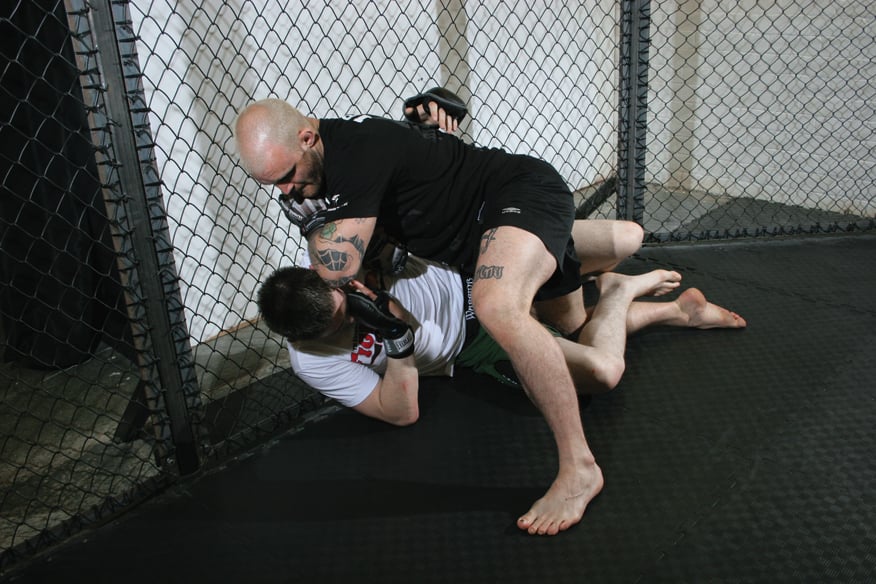
5 and is free to drop elbows or punches.










